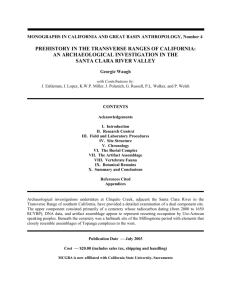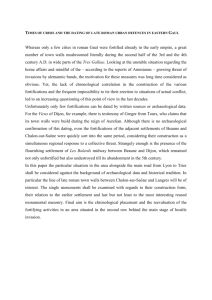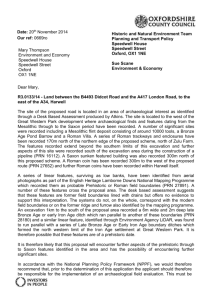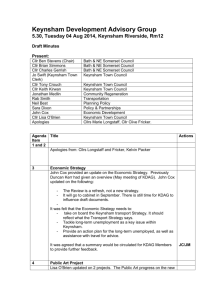here - Association for Roman Archaeology
advertisement
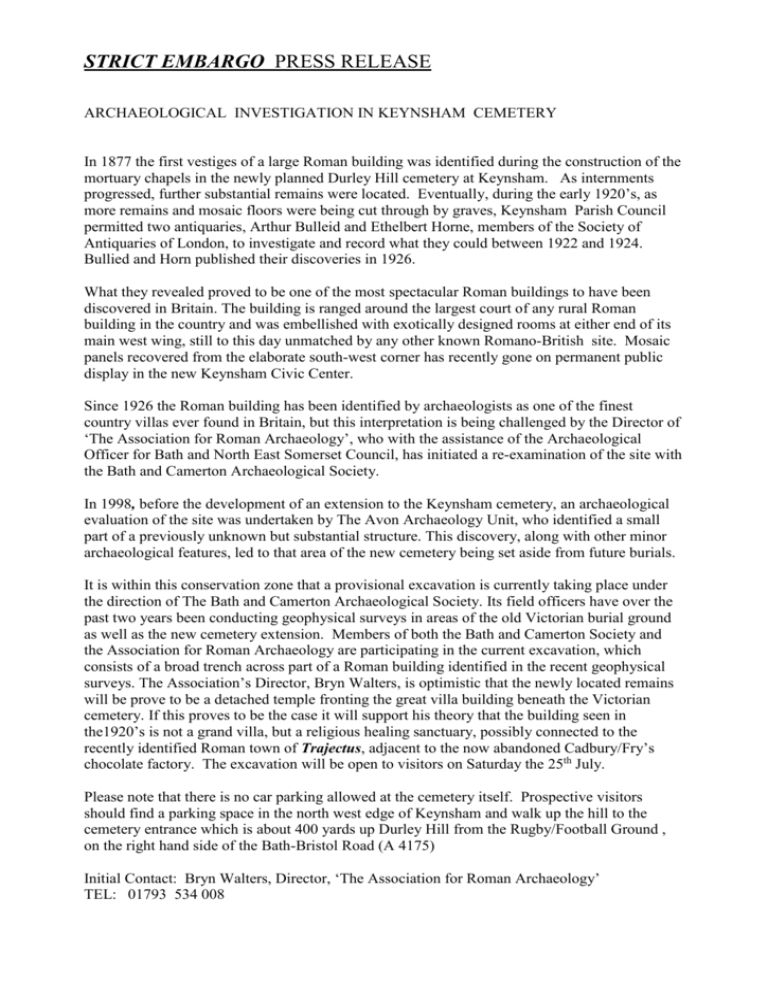
STRICT EMBARGO PRESS RELEASE ARCHAEOLOGICAL INVESTIGATION IN KEYNSHAM CEMETERY In 1877 the first vestiges of a large Roman building was identified during the construction of the mortuary chapels in the newly planned Durley Hill cemetery at Keynsham. As internments progressed, further substantial remains were located. Eventually, during the early 1920’s, as more remains and mosaic floors were being cut through by graves, Keynsham Parish Council permitted two antiquaries, Arthur Bulleid and Ethelbert Horne, members of the Society of Antiquaries of London, to investigate and record what they could between 1922 and 1924. Bullied and Horn published their discoveries in 1926. What they revealed proved to be one of the most spectacular Roman buildings to have been discovered in Britain. The building is ranged around the largest court of any rural Roman building in the country and was embellished with exotically designed rooms at either end of its main west wing, still to this day unmatched by any other known Romano-British site. Mosaic panels recovered from the elaborate south-west corner has recently gone on permanent public display in the new Keynsham Civic Center. Since 1926 the Roman building has been identified by archaeologists as one of the finest country villas ever found in Britain, but this interpretation is being challenged by the Director of ‘The Association for Roman Archaeology’, who with the assistance of the Archaeological Officer for Bath and North East Somerset Council, has initiated a re-examination of the site with the Bath and Camerton Archaeological Society. In 1998, before the development of an extension to the Keynsham cemetery, an archaeological evaluation of the site was undertaken by The Avon Archaeology Unit, who identified a small part of a previously unknown but substantial structure. This discovery, along with other minor archaeological features, led to that area of the new cemetery being set aside from future burials. It is within this conservation zone that a provisional excavation is currently taking place under the direction of The Bath and Camerton Archaeological Society. Its field officers have over the past two years been conducting geophysical surveys in areas of the old Victorian burial ground as well as the new cemetery extension. Members of both the Bath and Camerton Society and the Association for Roman Archaeology are participating in the current excavation, which consists of a broad trench across part of a Roman building identified in the recent geophysical surveys. The Association’s Director, Bryn Walters, is optimistic that the newly located remains will be prove to be a detached temple fronting the great villa building beneath the Victorian cemetery. If this proves to be the case it will support his theory that the building seen in the1920’s is not a grand villa, but a religious healing sanctuary, possibly connected to the recently identified Roman town of Trajectus, adjacent to the now abandoned Cadbury/Fry’s chocolate factory. The excavation will be open to visitors on Saturday the 25th July. Please note that there is no car parking allowed at the cemetery itself. Prospective visitors should find a parking space in the north west edge of Keynsham and walk up the hill to the cemetery entrance which is about 400 yards up Durley Hill from the Rugby/Football Ground , on the right hand side of the Bath-Bristol Road (A 4175) Initial Contact: Bryn Walters, Director, ‘The Association for Roman Archaeology’ TEL: 01793 534 008

